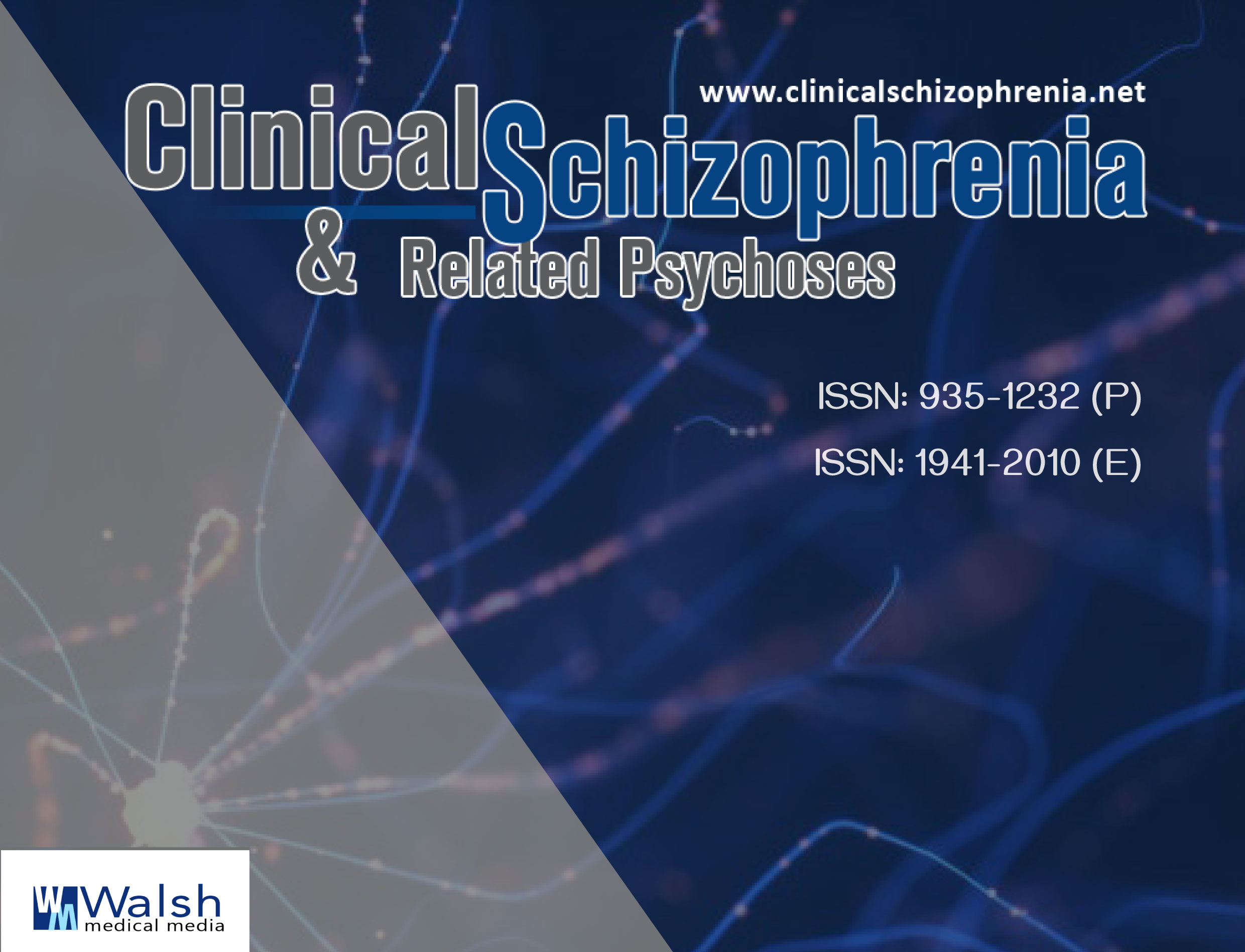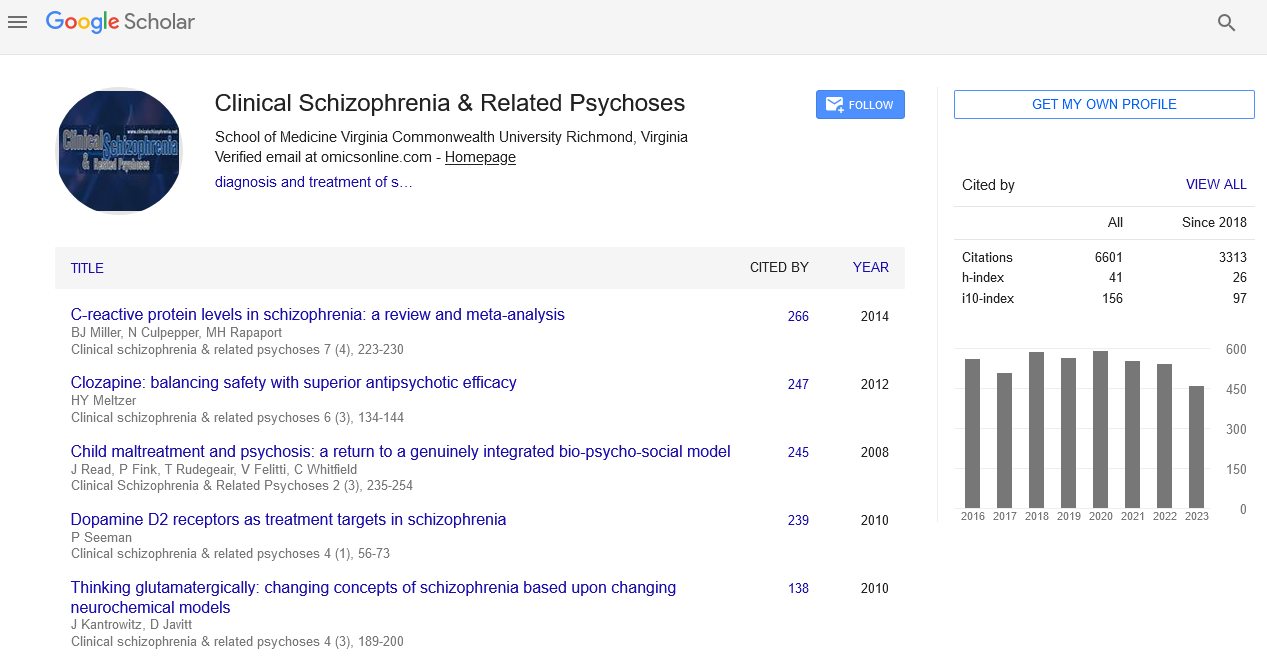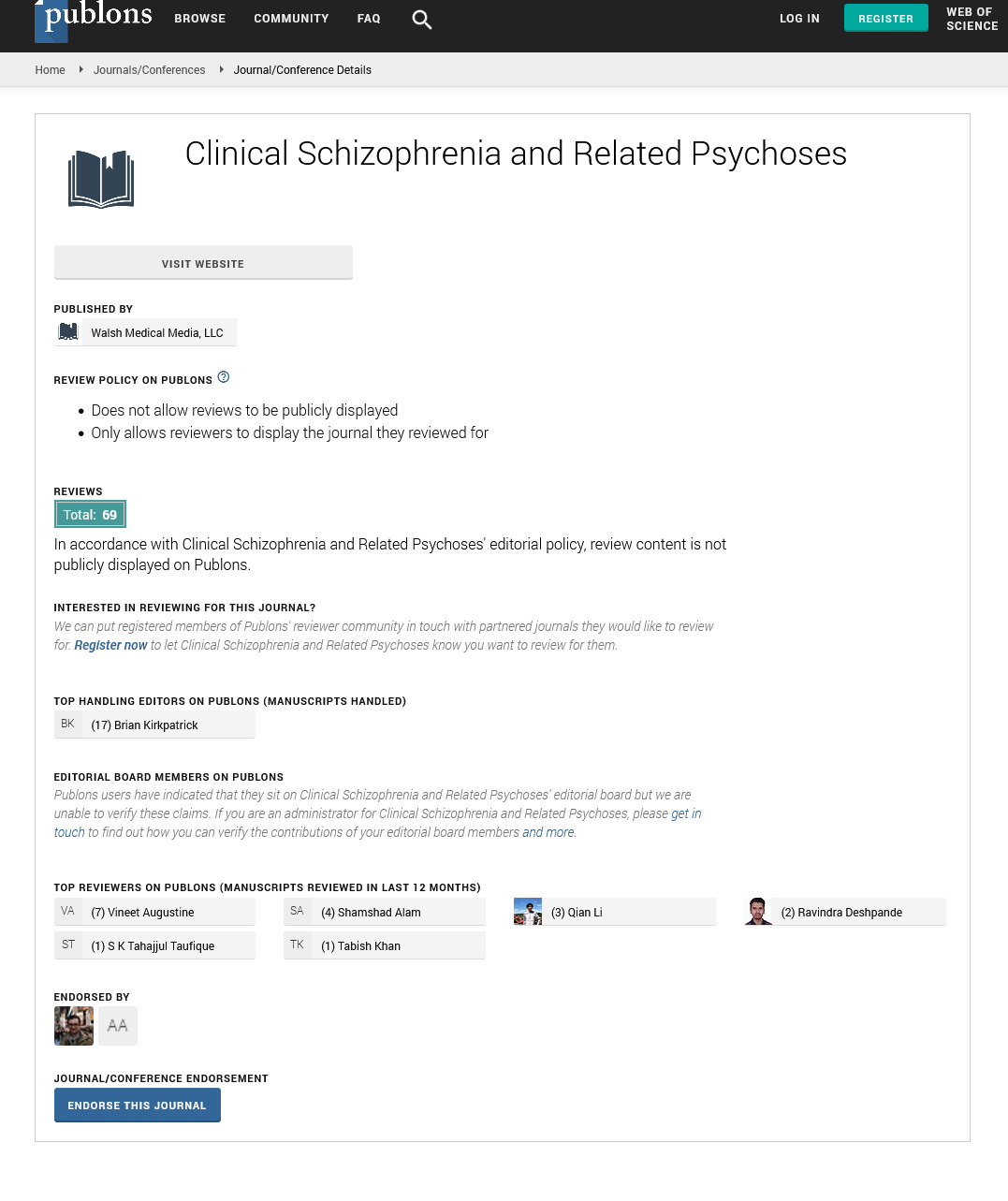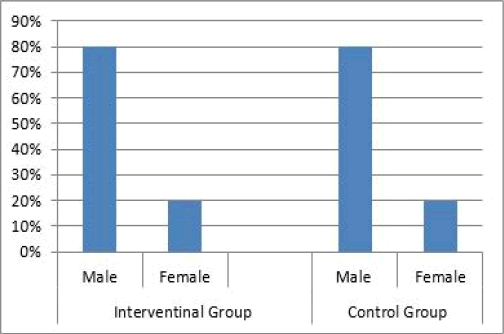Research Article - Clinical Schizophrenia & Related Psychoses ( 2024) Volume 18, Issue 3
Effects of Depression Taping in Acute Disturbance and Anxiety
Maira Syed1*, Muhammad Aazib Sherazi2, Tooba Sherazi2, Noureen Farooq3, Nusrat Batool4 and Noor ul Ain Abid52Department of Clinical Physiotherapy, Sherazi Physio Clinic Noorkot, Punjab, Pakistan
3Department of Medicine, Isra University, Islamabad, Pakistan
4Department of Physiotherapy, Abid Hospital/CDC Islamabad, Islamabad, Pakistan
5Department of Medicine, Superior University, Lahore, Pakistan
Maira Syed, Department of Medicine, Ibadat International University Islamabad, Islamabad, Pakistan, Email: chem@gmail.com
Received: 04-Aug-2023, Manuscript No. CSRP-23-108900; Editor assigned: 07-Aug-2023, Pre QC No. CSRP-23-108900 (PQ); Reviewed: 22-Aug-2023, QC No. CSRP-23-108900; Revised: 27-Aug-2024, Manuscript No. CSRP-23-108900 (R); Published: 03-Sep-2024
Abstract
Objectives: The objective of this randomized control trial study was assess the effectiveness of a Kinesio-taping in alleviating symptoms associated with disturbance and anxieties.
Methodology: In this experimental study, a total of 30 patients were chosen as participants. The patients were divided into two groups: Experimental group A consisting of 15 patients and control group B also consisting of 15 patients. The data collected from both groups were compared and analyzed using SPSS version 21.
Results: Statistical analysis shows that there are significant differences in the efficacy of both treatments and Kinesio taping has special advantages in treatment of disturbance and anxiety. In most of the patients it shows better results and in very few patients this treatment is less efficient.
Conclusion: Efficiency shown by both treatments was random. Kinesio taping with standard treatment protocol showed better results as compared to the standard treatment protocol alone for disturbance and anexity. In some patients Kinesio taping was less effective and on the other hand standard treatment shown good results in other patients. Kinesio taping showed better results in severe cases where standard treatment alone has less effectiveness.
So we can say that Kinesio taping with standard treatment shown better results as compared to the standard treatment protocol alone for disturbance and anexity, and have dramatic effects in comparison with standard treatment.
Keywords
Kinesio taping • Disturbance and anexity • Stability exercise • Mobilization • FAOS • Pain • Instability • Ligament tear
Introduction
The most prevalent musculoskeletal injuries are disturbance and anxiety’s, and the most prevalent victims are athletes with excessive motion and activity. The most probable etiology of disturbance and anxiety in soccer players is this excessive range of movement [1]. An individual with an acute sprain of the ankle has functional constraints owing to serious pain, restricted movement range, and enhanced ankle instability. One of the most prevalent symptoms is balance disorder. Disturbance and anexity improves ankle instability, influencing static and dynamic equilibrium [2].
Rehabilitation therapists utilize taping as an intermittent therapeutic approach to alleviate pain and promote stability in the knee. Taping impacts are pain relief in the impacted areas, blood circulation boost, and function enhancement [3]. Previous taping trials for the lower extremities revealed rises in isokinetic muscle function, upper extremity grip, and isometric strength [4]. Kinesio-Tape (KT)taping is used as an option to more proven disturbance and anexity taping and bracing methods. KT utilizes the latest type of elastic tape created by Dr. Kenzo Kase in the 1970’s and was intended to provide therapeutic advantages while offering muscle and joint support and stability without limiting the variety of movement of the body [5]. Disturbance and anexity is one of the most common injuries of musculoskeletal and is heavily linked with sporting operations. A sprain refers to an injury where the ligament is stretched or torn due to damage to the soft tissues. The exact cause of this injury is not fully understood. However, there is a prevailing belief that a disturbance and anexity occurs when there is excessive movement of the ankle, particularly when the foot is excessively inverted or everted during activities like running or landing after a jump. In the case of a lateral knee sprain, the Anterior Talofibular Ligament (ATFL), Calcaneofibular Ligament (CFL), and Posterior Talofibular Ligament (PTFL), which provide stability to the outer part of the ankle, are typically affected and damaged [6].
Taping techniques for the prevention of disturbance and anexity recurrence and improving ankle stability proprioception in patients with chronic ankle disease are becoming increasingly important. However, after taping therapy was applied, no trials were performed to evaluate walking motion of amateur soccer players with lateral disturbance and anexitys [7]. The most common cause of injury is inversion and motion of the area flexed ankle. Predisposing factors are history of ankle joint sprains, ligament hyper negligence syndrome, and specific mala-alignment, like limb varum and pes cavo-varus [8]. Hyper-supination with external rotation during walking is the leading cause of Lateral disturbance and anexitys. lateral disturbance and anexity can also be caused by excessive inversion and internal rotation of foot followed by external rotation of the lower leg. Hyper-plantar flexion is of the factor which can also lead to lateral disturbance and anexity [9]. Martin et al said that 80% of patients with acute lateral disturbance and anexity had subtalar joint injury. PTFL injury followed by dislocation and fracture is only found in severe disturbance and anexity [10]. Hypo-mobility, and reduced ROMs are also caused by the mechanical instability. Restricted dorsiflexion is considered to be a sign of lateral disturbance and anexity. If there is restricted dorsiflexion on talocrural joint, the respected joint won’t able to reach its closed pack position throughout the stance phase of gait which can lead to inversion and internal rotation [11].
In this study we will determine the effectiveness of kinesio-taping in relieving symptoms of disturbance and anexity.
Materials and Methods
This randomized control trial took place in the physiotherapy department of Islam medical college and teaching hospital in Sialkot. The sample population was divided into two groups: Group A (experimental group) and group B (control group), each consisting of 15 patients with acute disturbance and anexity. The sampling technique employed in this study was non-probability convenience sampling. The duration of the study spanned 3 to 4 months following the approval of the research synopsis. Data was collected using the FAOS Foot and Ankle Survey. Data analysis was performed using SPSS version 21. Each patient underwent a fourweek intervention period, and data was collected on the first day and at the end of every two weeks during this period.
For group A (experimental group) following interventions are applied: ROMs exercises strengthen exercises and stability exercises with depression taping. The aim of the exercise protocol was to decreases the symptoms of disturbance and anexity.
For group B (control group) following interventions are applied: Exercises strengthen exercises and stability exercises without depression taping. The aim of the exercise protocol was to decreases the symptoms of disturbance and anexity.
Results
In this study, a total of 30 participants were included, with 15 participants assigned to the experimental group and 15 participants assigned to the control group. In the experimental group, 80% of the participants were males, while 20% were females. Similarly, in the control group, 80% of the participants were males, and 20% were females (Figure 1 and Table 1).
| Foot ankle outcome scale pain score after treatment completion | ||||
|---|---|---|---|---|
| Specification of groups | Frequency | Percent | ||
| Interventional group | Valid | Mild pain | 12 | 80 |
| Moderate pain | 3 | 20 | ||
| Total | 15 | 100 | ||
| Control group | Valid | Mild pain | 11 | 73.3 |
| Moderate pain | 4 | 26.7 | ||
| Total | 15 | 100 | ||
Table 1. Showing foot ankle outcome scale pain score after treatment completion.
In interventional group according to the foot ankle outcome score for pain 12 patients had mild pain, and 3 patients had moderate pain. While in control group 11 patients had mild pain and 4 patients had moderate pain after treatment completion.
Based on Table 2, in group A, out of the 15 patients, 10 had mild symptoms of disturbance and anexity, and 5 had moderate symptoms after completing the treatment. In group B, out of the 15 patients, 5 had moderate symptoms, 6 had mild symptoms, 7 had moderate symptoms, and 2 had severe symptoms of disturbance and anexity after completing the treatment.
| Foot ankle outcome scale symptoms score after treatment completion | ||||
|---|---|---|---|---|
| Specification of groups | Frequency | Percent | ||
| Interventional group | Valid | Mild symptoms | 10 | 66.7 |
| Moderate symptoms | 5 | 33.3 | ||
| Total | 15 | 100 | ||
| Control group | Valid | Mild symptoms | 6 | 40 |
| Moderate symptoms | 7 | 46.7 | ||
| Severe symptoms | 2 | 13.3 | ||
| Total | 15 | 100 | ||
Table 2.Foot ankle outcome scale symptoms score after treatment completion.
In interventional group 14 participants had mild difficulty, 1 participant had moderate difficulty in sports and recreational activities. In control group 14 participants had mild difficulty and 1 participant had moderate difficulty in sports and recreational activities after treatment completion (Table 3).
| Specification of groups | Frequency | Percent | ||
| Interventional group | Valid | Mild difficulty | 14 | 93.3 |
| Moderate difficulty | 1 | 6.7 | ||
| Total | 15 | 100 | ||
| Control group | Valid | Mild difficulty | 14 | 93.3 |
| Moderate difficulty | 1 | 6.7 | ||
| Total | 15 | 100 | ||
Table 3. Foot ankle outcome scale disability score after treatment completion.
Discussion
In the current study there were thirty participants divided equally in two group, the interventional group and control group. The mean age of the interventional group was 23.33 std. 4.639 and mean age of control group was 21.73 std. 4.511. Out of 15 participants 3 were female and 12 were males in interventional group and in control group 3 were female and 12 were males.
The purpose of the experiment was to investigate whether Kinesio-taping applied to the anterior and lateral part of the ankle would improve ankle proprioception compared to a un taped ankle. A total of 30 subjects, comprising 15 men and 15 women between the ages of 18 and 30, participated in the study [12].
Simon, Janet MS, ATC et al. it was discovered that wearing KT (depression tape) for a prolonged period of time led to an improvement in proprioceptive deficits. Following the application of the tape, both individuals with and without ankle instability experienced similar enhancements in conscious proprioceptive awareness [13].
Study conducted in 2015 research suggests that the application of Kinesio taping is not effective in reducing acute swelling following a disturbance and anexity in athletes [14].
Another study conducted by Sun-Min Lee and Jung-Hoon Lee states that amateur soccer player who experienced a grade 2 medial disturbance and anexity during a match found that the daily application of ankle inversion taping using depression tape for two months was an effective therapy. The results demonstrated that ankle inversion taping using depression tape is a beneficial treatment option for patients with a medial disturbance and anexity [15].
Byeong-Jo Kim et al. said in their study that continual consumption of depression tape in ankle balance taping is also an efficient dealing for improving the ankle stability of patients with ankle unsteadiness [16].
Conclusion
Joint mobilization and balance trainings with kinesio taping play and important role in preventing and treating disturbance and anexitys, these two protocols with Kinesio taping must be included in rehabilitation programs of disturbance and anexitys. Both these methods have shown high benefits in training or improving the condition.
References
- Gallagher, Matthew W, Michael J Zvolensky, Laura J Long, and Andrew H Rogers, et al. "The impact of COVID-19 experiences and associated stress on anxiety, depression, and functional impairment in American adults." Cognit Ther Res 44 (2020): 1043-1051.
[Crossref] [Google Scholar] [PubMed]
- Frasure-Smith, Nancy, and Francois Lesperance. "Depression and anxiety as predictors of 2-year cardiac events in patients with stable coronary artery disease." Arch Gen Psychiatry 65 (2008): 62-71.
[Crossref] [Google Scholar] [PubMed]
- Jimenez, Fiacro, Francisco Velasco, Rafael Salin-Pascual, and Jose A Hernandez, et al. "A patient with a resistant major depression disorder treated with deep brain stimulation in the inferior thalamic peduncle." Neurosurgery 57 (2005): 585-593.
[Crossref] [Google Scholar] [PubMed]
- Pumar, Marsus I, Curt R Gray, James R Walsh, and Ian A Yang, et al. "Anxiety and depression Important psychological comorbidities of COPD." J Thorac Dis 6 (2014): 1615.
[Crossref] [Google Scholar] [PubMed]
- Wilson, Keith G, Harvey Max Chochinov, Merika Graham Skirko, and Pierre Allard, et al. "Depression and anxiety disorders in palliative cancer care." J Pain Symptom Manage 33 (2007): 118-129.
[Crossref] [Google Scholar] [PubMed]
- Asim, Muhammad, Huajie Wang, Xi Chen, and Jufang He, et al. "Potentiated GABAergic neuronal activities in the basolateral amygdala alleviate stress-induced depressive behaviors." CNS Neurosci Ther 30 (2024): 14422.
[Crossref] [Google Scholar] [PubMed]
- Ruscio, Ayelet Meron, Emily L Gentes, Jason D Jones, and Lauren S Hallion, et al. "Rumination predicts heightened responding to stressful life events in major depressive disorder and generalized anxiety disorder." J Abnorm Psychol 124 (2015): 17.
[Crossref] [Google Scholar] [PubMed]
- Cassileth, Barrie R, Andrew J Vickers, and Lucanne A Magill. "Music therapy for mood disturbance during hospitalization for autologous stem cell transplantation: a randomized controlled trial." Cancer 98 (2003): 2723-2729.
[Crossref] [Google Scholar] [PubMed]
- Pollatos, Olga, Eva Traut-Mattausch, and Rainer Schandry. "Differential effects of anxiety and depression on interoceptive accuracy." Depress Anxiety 26 (2009): 167-173.
[Crossref] [Google Scholar] [PubMed]
- Sagen, Ulrike, Tom Gunnar Vik, Torbjørn Moum, and Tore Mørland, et al. "Screening for anxiety and depression after stroke: Comparison of the Hospital Anxiety and Depression Scale and the Montgomery and Åsberg Depression Rating Scale." J Psychosom Res 6 (2009): 325-332.
[Crossref] [Google Scholar] [PubMed]
- McTeague, Lisa M, and Peter J Lang. "The anxiety spectrum and the reflex physiology of defense: from circumscribed fear to broad distress." Depress Anxiety 29 (2012): 264-281.
[Crossref] [Google Scholar] [PubMed]
- Meyer, Thomas J, Mark L Miller, Richard L Metzger, and Thomas D Borkovec, et al. "Development and validation of the penn state worry questionnaire." Behav Res Ther 28 (1990): 487-495.
[Crossref] [Google Scholar] [PubMed]
- Palanza, Paola. "Animal models of anxiety and depression: how are females different?." Neurosci Biobehav Rev 25 (2001): 219-233.
[Crossref] [Google Scholar] [PubMed]
- Baethge, Christopher, Ross J Baldessarini, Klaus Freudenthal, and Anna Streeruwitz, et al. "Hallucinations in bipolar disorder: characteristics and comparison to unipolar depression and schizophrenia." Bipolar Disord 7 (2005): 136-145.
[Crossref] [Google Scholar] [PubMed]
- Alder, Judith, Nadine Fink, Johannes Bitzer, and Irene Hosli, et al. "Depression and anxiety during pregnancy: a risk factor for obstetric, fetal and neonatal outcome? A critical review of the literature." J Matern Fetal Neonatal Med 20 (2007): 189-209.
[Crossref] [Google Scholar] [PubMed]
- Rapkin, Andrea J, and Sharon A Winer. "Premenstrual syndrome and premenstrual dysphoric disorder: quality of life and burden of illness." Expert Rev Pharmacoecon Outcomes Res 9 (2009): 157-170.
[Crossref] [Google Scholar] [PubMed]
Citation: Syed, Maira, Muhammad Aazib Sherazi, Tooba Sherazi and Noureen Farooq, et al.. "Effects of Depression Taping in Acute Disturbance and Anxiety ." Clin Schizophr Relat Psychoses 18 (2024).
Copyright: © 2024 Syed M, et al. This is an open-access article distributed under the terms of the creative commons attribution license which permits unrestricted use, distribution and reproduction in any medium, provided the original author and source are credited. This is an open access article distributed under the terms of the Creative Commons Attribution License, which permits unrestricted use, distribution, and reproduction in any medium, provided the original work is properly cited.







